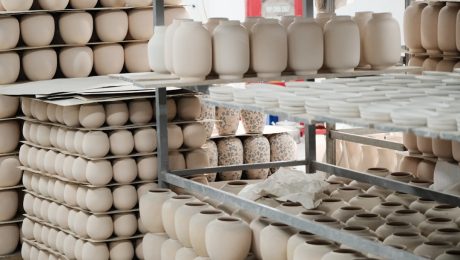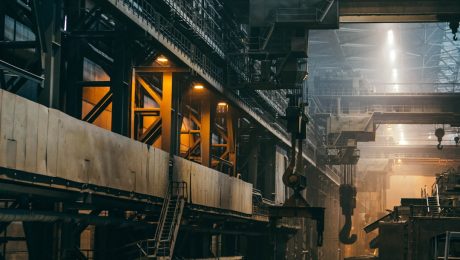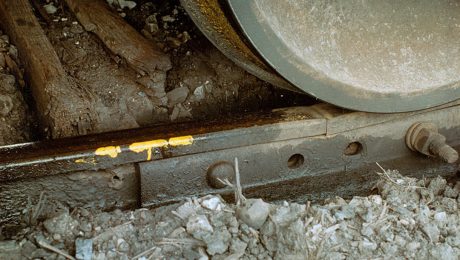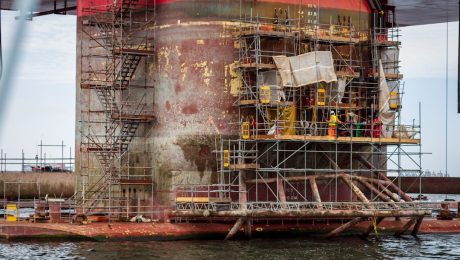ISO 9001:2015 is more than just a certification; it’s a framework for building a robust and efficient Quality Management System (QMS). This post delves into the practical application of ISO 9001, exploring how it transforms businesses and enhances customer satisfaction.
1. Understanding the Core Principles of ISO 9001
The ISO 9001 standard is built upon several fundamental principles, including customer focus, leadership, engagement of people, process approach, improvement, evidence-based decision making, and relationship management. These principles aren’t simply abstract concepts; they are the foundation for building a truly effective QMS. Customer focus, for instance, isn’t just about meeting customer requirements; it’s about anticipating their needs and exceeding expectations. This requires active listening, thorough market research, and a continuous feedback loop. Leadership plays a crucial role in setting the tone and direction for the QMS. Leaders must champion the system, allocate resources effectively, and foster a culture of quality throughout the organization. Engaging people at all levels is vital for successful implementation. Everyone, from top management to frontline staff, needs to understand their role in maintaining the QMS and contributing to continuous improvement.
2. Implementing ISO 9001: A Step-by-Step Approach
Implementing ISO 9001 is a structured process. It typically begins with a gap analysis to assess the organization’s current state against the requirements of the standard. This analysis identifies areas where improvements are needed. Next, a QMS is designed and documented, outlining processes, procedures, and responsibilities. This documentation is crucial for ensuring consistency and traceability. Key processes need to be defined, mapped, and optimized for efficiency and effectiveness. This often involves using tools like flowcharts and process maps to visualize the workflow. Training is essential to ensure everyone understands their roles and responsibilities within the QMS. Once the system is implemented, internal audits are conducted to verify its effectiveness and identify any areas for improvement. Corrective and preventive actions are implemented to address any non-conformities identified during the audits. Regular management reviews ensure the QMS remains relevant, effective, and aligned with the organization’s strategic objectives.
3. Document Control: The Backbone of Your ISO 9001 System
Effective document control is paramount in any ISO 9001-compliant QMS. This involves establishing a system for creating, reviewing, approving, distributing, and controlling all relevant documents. This ensures that everyone is working with the most up-to-date and accurate information. The system should include procedures for identifying, storing, retrieving, and disposing of documents. Version control is essential to prevent confusion and ensure that obsolete documents are not used. A robust document control system minimizes errors, improves consistency, and facilitates traceability. This is particularly important in regulated industries where audit trails are crucial for compliance.
4. The Role of Internal Audits and Management Review
Internal audits are a crucial part of the ISO 9001 process. They provide an objective evaluation of the QMS’s effectiveness and compliance with the standard. Regular internal audits help identify areas for improvement and ensure that the system is functioning as intended. Audits should be conducted by trained personnel who are independent of the areas being audited. The audit process should include a systematic review of documents, records, and processes. Findings are documented and corrective actions are implemented to address any non-conformities. Management review is another critical aspect of ISO 9001. This is a regular meeting of top management to review the performance of the QMS and its effectiveness in achieving organizational objectives. The review involves assessing key performance indicators (KPIs), evaluating opportunities for improvement, and making decisions about resource allocation. Management review ensures that the QMS remains aligned with the organization’s strategic goals and adapts to changing business needs.
5. Reaping the Rewards: Benefits of ISO 9001 Certification
Achieving ISO 9001 certification brings a multitude of benefits. It enhances credibility and builds trust with customers, demonstrating a commitment to quality and customer satisfaction. It can lead to improved efficiency and reduced costs by streamlining processes and minimizing waste. It also facilitates continuous improvement, driving innovation and competitiveness. Certification can open doors to new business opportunities, particularly with organizations that require ISO 9001 compliance from their suppliers. Furthermore, it can improve employee morale and engagement by fostering a culture of quality and continuous improvement. The benefits extend beyond the organization itself; it can also improve relationships with suppliers and other stakeholders, creating a more robust and resilient supply chain.
Implementing an ISO 9001 Quality System is a journey, not a destination. It requires commitment, dedication, and a willingness to embrace continuous improvement. However, the rewards are significant, leading to enhanced efficiency, increased customer satisfaction, and a stronger competitive position in the market.
In today’s interconnected world, the seamless movement of goods across borders is no longer a luxury but a necessity. This intricate dance of international trade relies heavily on robust and efficient global logistics partner networks. These networks, composed of a diverse array of specialized companies, are the unsung heroes behind the timely delivery of products from origin to consumer. This post will delve into the complexities of these networks, exploring their key components and the challenges they face in the ever-evolving global landscape.
1. The Architecture of Global Logistics Partner Networks: A Web of Specialization
Global logistics partner networks are not monolithic entities. Instead, they are intricate webs of interconnected businesses, each specializing in a particular aspect of the logistics process. These specialists might include freight forwarders responsible for coordinating transportation across multiple modes (sea, air, land), customs brokers handling import/export documentation and compliance, warehousing and distribution companies managing inventory and fulfillment, and last-mile delivery services ensuring final delivery to the end customer. The effectiveness of the network relies on seamless communication and collaboration between these partners. Technological integrations, such as shared platforms and APIs, are crucial for real-time visibility and efficient data exchange.
Furthermore, the architecture of these networks can be tailored to specific industry needs. For example, a network supporting the pharmaceutical industry will have stringent requirements for temperature-controlled transportation and secure handling, whereas a network for fast-fashion might prioritize speed and agility above all else. This specialization allows for greater efficiency and reduces the risk of errors or delays.
2. Building Trust and Collaboration: The Foundation of Successful Partnerships
The success of any global logistics partner network hinges on strong, trusting relationships between its members. This involves shared goals, open communication, and a commitment to mutual benefit. Partners need to be able to rely on each other to deliver on their promises, consistently maintaining high standards of service and reliability. Building trust takes time and effort, often involving rigorous vetting processes and performance monitoring. Key Performance Indicators (KPIs) such as on-time delivery rates, damage rates, and customer satisfaction scores are regularly tracked to ensure partners meet agreed-upon standards.
Effective communication is paramount. Real-time updates on shipment status, potential delays, and any unforeseen circumstances are crucial for proactive problem-solving and minimizing disruptions. This requires the adoption of advanced technologies, such as cloud-based platforms and digital dashboards, which enable transparent and efficient information sharing.
3. Navigating Global Regulations and Compliance: A Complex Landscape
Global logistics partner networks must navigate a complex and ever-changing regulatory landscape. Each country has its own unique set of import and export regulations, customs procedures, and security requirements. Compliance with these regulations is crucial to avoid delays, penalties, and potential legal issues. This necessitates a deep understanding of international trade laws and a commitment to staying up-to-date on any changes. Partnering with experienced customs brokers and regulatory experts is often essential to ensure seamless compliance.
Furthermore, security concerns are paramount. Networks need to implement robust security measures to protect against theft, damage, and counterfeiting. This might involve using secure containers, implementing tracking and monitoring technologies, and adhering to strict security protocols at every stage of the supply chain. Collaboration with governments and security agencies is often crucial in mitigating these risks.
4. Technological Advancements: Driving Efficiency and Transparency
Technological advancements are transforming global logistics partner networks, driving efficiency and transparency. The use of blockchain technology, for example, can enhance security and traceability, providing a tamper-proof record of every step in the supply chain. Artificial intelligence (AI) and machine learning (ML) are being used to optimize routes, predict delays, and improve forecasting accuracy. Internet of Things (IoT) devices, such as sensors and trackers, provide real-time visibility into shipment status and environmental conditions.
These technologies are not only improving operational efficiency but also enhancing customer experience. Real-time tracking information allows customers to monitor their shipments and receive proactive updates, leading to greater satisfaction and trust. The adoption of such technologies is becoming increasingly crucial for competitiveness in the global logistics market.
5. Overcoming Challenges and Future Trends: Adapting to a Dynamic World
Despite their significant advantages, global logistics partner networks face various challenges. Geopolitical instability, trade wars, and natural disasters can disrupt supply chains, leading to delays and increased costs. The ongoing shortage of skilled labor and the increasing complexity of regulatory compliance also pose significant hurdles. Furthermore, the growing demand for sustainable and environmentally friendly logistics solutions requires networks to adapt and adopt greener practices.
Future trends suggest a continued focus on digitalization, automation, and sustainability. The use of advanced technologies will become even more prevalent, driving further efficiency gains and improved transparency. The adoption of sustainable practices, such as reducing carbon emissions and optimizing fuel consumption, will become increasingly important to meet growing environmental concerns. Networks that successfully adapt to these challenges and embrace innovation will be best positioned for success in the future.
In conclusion, global logistics partner networks are essential for the smooth functioning of international trade. Their success depends on strong partnerships, technological advancements, and a commitment to adapting to a dynamic global landscape. By understanding the complexities of these networks and embracing innovation, businesses can optimize their supply chains and gain a competitive edge in the global marketplace.
Tags: Global Logistics, Partner Networks, Supply Chain Management, International Trade, Logistics Technology
The steel industry is the backbone of countless industries, from construction and automotive to aerospace and energy. The quality and consistency of steel are paramount, and adherence to rigorous standards is essential for ensuring safety, reliability, and performance. This is where the American Society for Testing and Materials (ASTM) standards come into play. This comprehensive guide delves into the critical role of ASTM compliance in steel production, exploring the intricacies of these standards and their impact on the industry.
Understanding ASTM Standards and their Significance in Steel Production
ASTM International develops and publishes voluntary consensus standards for materials, products, systems, and services. For the steel industry, these standards provide a common language and framework for specifying material properties, testing methods, and quality control procedures. Compliance with ASTM standards ensures that steel produced meets predetermined specifications, guaranteeing consistent quality and performance across different manufacturers and applications. These standards cover a vast range of steel types, including carbon steel, alloy steel, stainless steel, and various specialized steel grades. Without these standardized specifications, the steel industry would be plagued by inconsistencies, making it challenging to ensure the safety and reliability of steel structures and components.
Key ASTM Standards for Steel Grades and Their Specific Applications
Numerous ASTM standards govern the production and testing of steel. Some of the most commonly used include ASTM A36 (structural steel), ASTM A572 (high-strength low-alloy steel), and ASTM A992 (high-strength low-alloy structural steel). ASTM A36 is a widely used structural steel known for its versatility and weldability, commonly found in buildings and bridges. ASTM A572 offers higher strength than A36, making it suitable for applications requiring greater load-bearing capacity. ASTM A992 is another high-strength low-alloy steel frequently used in the construction of tall buildings and other structures where strength and weight efficiency are critical. Each standard details specific chemical composition, mechanical properties (tensile strength, yield strength, elongation), and testing methods to ensure that the steel meets the required specifications. Understanding these specific standards and their applications is crucial for selecting the appropriate steel grade for a particular project.
The Role of Material Testing and Quality Control in Ensuring ASTM Compliance
Ensuring ASTM compliance isn’t just about meeting specifications on paper; it requires rigorous material testing and quality control throughout the entire steel production process. From the initial raw materials to the final product, manufacturers must adhere to strict protocols to verify that the steel conforms to the chosen ASTM standard. This includes chemical analysis to determine the elemental composition, mechanical testing to evaluate strength and ductility, and non-destructive testing (NDT) methods like ultrasonic testing and magnetic particle inspection to detect internal flaws. Regular audits and inspections are also essential to ensure consistent adherence to the standards and to identify and rectify any deviations. The data generated from these tests is meticulously documented and forms an integral part of the steel’s traceability and certification, providing assurance to customers about the quality and reliability of the material.
Consequences of Non-Compliance with ASTM Standards in Steel Production
Failure to comply with ASTM standards can have severe consequences, ranging from economic penalties to safety hazards. Non-compliant steel may exhibit unexpected behavior under stress, leading to structural failures and potentially catastrophic consequences in applications like bridges, buildings, and transportation infrastructure. Furthermore, non-compliance can result in legal repercussions, including lawsuits and hefty fines. Reputational damage can also be substantial, impacting a manufacturer’s credibility and future business opportunities. Therefore, maintaining rigorous ASTM compliance is not just a matter of meeting standards; it’s a crucial aspect of ensuring the safety and reliability of steel products and maintaining a strong reputation within the industry.
Achieving and Maintaining ASTM Compliance: Best Practices for Steel Manufacturers
Achieving and maintaining ASTM compliance requires a multifaceted approach encompassing rigorous quality control, continuous improvement, and a commitment to excellence. This includes investing in state-of-the-art testing equipment, employing skilled personnel trained in ASTM standards and testing procedures, and implementing robust quality management systems (QMS) aligned with ISO 9001 or similar standards. Regular internal audits and external certifications help to ensure ongoing compliance. Staying updated on the latest revisions and amendments to ASTM standards is also crucial, as these standards are periodically updated to reflect advancements in technology and industry best practices. Proactive monitoring of the entire production process, from raw material selection to final product delivery, is essential for early detection and correction of any deviations from the specified standards.
In conclusion, ASTM compliance is not merely a regulatory requirement but a cornerstone of responsible and sustainable steel production. By adhering to these standards, steel manufacturers ensure the quality, safety, and reliability of their products, safeguarding lives and contributing to the integrity of countless structures and applications worldwide.
Steel’s strength and durability are undeniable, but its thermal conductivity can be a significant drawback in certain applications. Enter thermally insulated steel profiles – a game-changer in construction, engineering, and various industries where both structural integrity and thermal efficiency are paramount. This comprehensive guide delves into the world of these innovative profiles, exploring their construction, benefits, applications, and future prospects.
Understanding the Construction of Thermally Insulated Steel Profiles
Thermally insulated steel profiles aren’t simply steel with insulation slapped on. Their design involves a strategic integration of high-performance insulation materials within the steel structure. Common construction methods include:
- Sandwich Construction: This involves bonding a layer of insulation (typically polyurethane, polyisocyanurate, or mineral wool) between two steel sheets. The sheets are often profiled for added strength and rigidity.
- Core-Filled Profiles: In this method, the insulation material is directly injected or cast into a hollow steel profile, effectively filling the core and providing a robust, thermally efficient unit.
- Hybrid Systems: Some manufacturers utilize a combination of sandwich and core-filling techniques to optimize thermal performance and structural capabilities based on specific application needs.
The choice of insulation material significantly impacts the profile’s thermal performance and overall cost. Polyurethane and polyisocyanurate offer excellent insulation properties with relatively low density, while mineral wool provides fire resistance and sound insulation benefits.
Superior Thermal Performance: Reducing Energy Loss and Gain
The primary advantage of thermally insulated steel profiles lies in their superior thermal performance. By effectively breaking the thermal bridge created by solid steel, these profiles significantly reduce heat transfer through the structure. This translates to:
- Reduced energy consumption: In buildings, this means lower heating and cooling costs, contributing to a smaller carbon footprint.
- Improved indoor comfort: Minimized temperature fluctuations lead to a more comfortable and consistent indoor environment, regardless of external weather conditions.
- Enhanced condensation control: By preventing significant temperature differences between the inside and outside surfaces, these profiles reduce the risk of condensation formation, preventing mold growth and structural damage.
The thermal performance is typically measured by the U-value (or k-value), which represents the rate of heat transfer. Lower U-values indicate better thermal insulation.
Diverse Applications Across Industries: From Buildings to Transportation
The versatility of thermally insulated steel profiles makes them suitable for a wide array of applications:
- Building Construction: Used extensively in curtain walls, facades, doors, and roofs, offering energy-efficient building envelopes.
- Cold Storage Facilities: Their exceptional insulation properties make them ideal for maintaining low temperatures in refrigerated warehouses and transport vehicles.
- Refrigerated Transportation: Used in the construction of refrigerated trailers and containers, ensuring the safe and efficient transport of perishable goods.
- Industrial Applications: Suitable for applications requiring both structural strength and thermal insulation, such as industrial enclosures and process equipment.
- Renewable Energy: Used in solar panel mounting systems and other renewable energy infrastructure to enhance efficiency and durability.
The specific profile design and insulation material are chosen based on the individual requirements of each application.
Advantages Over Traditional Steel Profiles: A Cost-Benefit Analysis
While the initial cost of thermally insulated steel profiles might be higher than traditional steel profiles, the long-term benefits far outweigh the initial investment. Key advantages include:
- Energy Savings: Reduced heating and cooling costs lead to significant long-term cost savings.
- Improved Durability: The insulation layer protects the steel from corrosion and environmental damage, extending its lifespan.
- Enhanced Comfort: Improved indoor climate control leads to a more comfortable and productive environment.
- Reduced Maintenance: The protection provided by the insulation layer reduces the need for frequent maintenance and repairs.
- Environmental Benefits: Reduced energy consumption contributes to a smaller carbon footprint and aligns with sustainable building practices.
A thorough cost-benefit analysis, considering the lifecycle costs, will often demonstrate the economic viability of thermally insulated steel profiles.
Future Trends and Innovations in Thermally Insulated Steel Profiles
The field of thermally insulated steel profiles is constantly evolving. Future trends include:
- Development of novel insulation materials: Research focuses on developing even more efficient and sustainable insulation materials with improved thermal performance and reduced environmental impact.
- Integration of smart technologies: The incorporation of sensors and other smart technologies to monitor and optimize thermal performance.
- Advanced manufacturing techniques: Improved manufacturing processes to enhance the precision, speed, and efficiency of profile production.
- Customization and design optimization: Increased focus on designing custom profiles tailored to specific applications and requirements.
- Lifecycle assessment and sustainability: Growing emphasis on the lifecycle assessment of these profiles to minimize environmental impact and promote circular economy principles.
These advancements are poised to further enhance the performance, sustainability, and cost-effectiveness of thermally insulated steel profiles.
Tags: Thermally Insulated Steel Profiles, Insulated Steel Sections, Steel Profile Insulation, Energy Efficient Steel, Sustainable Building Materials
For decades, galvanized pipes have been a staple in plumbing systems worldwide. While newer materials have emerged, galvanized steel pipes continue to offer a compelling combination of durability, strength, and cost-effectiveness. This post delves into the significant advantages of choosing galvanized pipes for your next plumbing project, dispelling common misconceptions and highlighting their enduring relevance in modern construction.
Unmatched Durability and Longevity: The Long-Lasting Solution
One of the most significant advantages of galvanized pipes is their exceptional durability. The galvanization process, which involves coating the steel pipe with a layer of zinc, significantly enhances its resistance to corrosion and rust. Unlike many other materials, galvanized pipes can withstand the constant pressure and wear and tear of a plumbing system for many years, often exceeding 50 years with proper installation and maintenance. This longevity translates to reduced replacement costs and less disruption to your plumbing system over the long term. This superior lifespan makes them a cost-effective solution despite potentially higher upfront costs compared to some alternatives.
Superior Corrosion Resistance: Protecting Against the Elements
The zinc coating on galvanized pipes acts as a sacrificial anode. This means that the zinc corrodes instead of the underlying steel, effectively protecting the pipe from rust and degradation. This is particularly crucial in areas with high humidity, acidic water, or fluctuating temperatures. While some corrosion might eventually occur (especially in areas with very hard water), the rate is significantly slower compared to uncoated steel pipes. This resistance to corrosion ensures the integrity and efficiency of your plumbing system for an extended period, reducing the risk of leaks, bursts, and costly repairs.
Exceptional Strength and Pressure Handling: Built to Last
Galvanized steel pipes possess remarkable strength and are capable of withstanding high water pressure. This is vital for ensuring the safe and reliable transportation of water throughout your home or building. Unlike more flexible materials, galvanized pipes maintain their structural integrity under pressure, minimizing the risk of leaks or bursts. Their robust nature makes them ideal for applications where high pressure is expected, such as main water lines or fire sprinkler systems. This inherent strength contributes to the overall longevity and reliability of the plumbing system.
Cost-Effectiveness in the Long Run: A Smart Investment
While the initial cost of galvanized pipes might be slightly higher than some other materials like PVC, the long-term cost-effectiveness is undeniable. Their extended lifespan significantly reduces the frequency of replacements and repairs, resulting in considerable savings over the lifetime of the plumbing system. The reduced maintenance needs further contribute to the overall cost-effectiveness. This makes galvanized pipes a prudent investment, especially for projects where longevity and reliability are paramount.
Ease of Installation and Joining: Simple and Efficient
Galvanized pipes are relatively easy to install and join, particularly using traditional methods like threaded connections. This simplifies the installation process, potentially reducing labor costs. While newer materials may offer quicker installation times in some aspects, the established techniques for working with galvanized pipes make them a familiar and manageable option for experienced plumbers. The durability of the threaded connections further contributes to the overall reliability of the system.
In conclusion, the advantages of galvanized pipes extend beyond their initial cost. Their durability, superior corrosion resistance, exceptional strength, cost-effectiveness in the long run, and ease of installation make them a compelling choice for various plumbing applications. While modern materials offer alternatives, the enduring performance and reliability of galvanized pipes solidify their position as a dependable and practical solution for long-lasting plumbing systems.
Tags: galvanized pipes, plumbing pipes, corrosion resistant pipes, durable plumbing, steel pipes
The oil and gas industry relies heavily on efficient and reliable well construction. Two critical components ensuring the safe and productive extraction of hydrocarbons are casing and tubing. This comprehensive guide delves into the intricacies of these essential elements, explaining their functions, types, materials, and overall importance in the industry.
The Vital Role of Casing in Well Construction
Casing is a series of steel pipes cemented into the borehole during the drilling process. Its primary function is to provide structural integrity to the wellbore, preventing collapse of the surrounding formations. This is especially crucial in unstable or fractured formations where the wellbore could otherwise cave in. Casing also isolates different geological zones, preventing the mixing of fluids and maintaining pressure control. Different sizes and grades of casing are used throughout the well, with larger diameter casing placed at the surface and progressively smaller diameter casing used at greater depths. The selection of casing depends on several factors, including the depth of the well, the geological formations encountered, and the planned production methods.
Tubing: The Lifeline for Hydrocarbon Production
Once the well is cased and cemented, tubing is installed inside the casing. This smaller diameter pipe acts as the conduit for the production of hydrocarbons from the reservoir to the surface. Tubing is subjected to high pressures and temperatures, and its integrity is critical to prevent leaks and maintain production efficiency. Different types of tubing are available, each designed to withstand specific operating conditions. Common materials include high-strength steel alloys, designed to resist corrosion, scaling, and erosion caused by the produced fluids.
Casing and Tubing Materials: A Deep Dive into Strength and Durability
The choice of materials for casing and tubing is paramount to well longevity and safety. High-strength steel alloys are the most commonly used materials, offering excellent resistance to high pressures and temperatures. The specific alloy used will depend on the well’s conditions; some alloys are designed for high-temperature, high-pressure (HTHP) environments, while others are optimized for corrosion resistance in specific chemical environments. The selection process often involves metallurgical analysis to ensure compatibility with the expected downhole conditions. Recent advancements include the use of specialized coatings and enhanced alloys to further improve corrosion resistance and longevity.
Cementing Operations: Ensuring a Secure Bond
The process of cementing is critical to the integrity of the well. Cement is pumped down the annulus (the space between the casing and the borehole wall) to create a strong, impermeable seal. This seal prevents fluid migration between different geological formations and prevents the casing from collapsing. The quality of the cement job is rigorously monitored to ensure complete coverage and proper bonding. Defective cementing can lead to serious problems, including wellbore instability, environmental contamination, and production losses. Advanced techniques, such as logging tools and specialized cement slurries, are employed to optimize the cementing process and ensure its success.
Challenges and Innovations in Casing and Tubing Technology
The oil and gas industry constantly faces challenges related to casing and tubing. These include dealing with increasingly complex geological formations, extreme downhole conditions (high temperatures and pressures), and the need for improved corrosion resistance. Innovations in materials science, such as the development of advanced alloys and coatings, are continually addressing these challenges. Furthermore, advancements in well completion techniques and monitoring technologies are enhancing the efficiency and safety of casing and tubing operations. The use of intelligent completion systems, which allow for real-time monitoring and control of the well, is becoming increasingly common. These systems provide valuable data that can help optimize production and prevent potential problems.
In conclusion, casing and tubing are indispensable components in the oil and gas industry. Their proper selection, installation, and maintenance are essential for safe and efficient hydrocarbon production. Continuous innovation in materials and techniques ensures that these critical elements continue to meet the evolving demands of the industry.
SEO-Friendly Tags:
- Oil and Gas Casing
- Oil Well Tubing
- Well Completion Techniques
- Petroleum Engineering
- Downhole Technology
body {
font-family: sans-serif;
line-height: 1.6;
}
h1, h2, h3 {
color: #333;
}
Fire-resistant steel plays a critical role in safeguarding lives and property in countless applications. From skyscrapers to offshore platforms, its ability to withstand extreme temperatures makes it an indispensable material in modern construction and engineering. This comprehensive guide delves into the fascinating world of fire-resistant steel, exploring its properties, applications, and the future of this vital technology.
Understanding the Properties of Fire-Resistant Steel
Fire-resistant steel isn’t simply steel that’s been coated; it possesses inherent properties that allow it to maintain its structural integrity at elevated temperatures. These properties are primarily achieved through specific alloying elements. Common additions include chromium, nickel, molybdenum, and silicon. These elements significantly increase the steel’s resistance to oxidation and softening at high temperatures. The exact composition varies depending on the desired level of fire resistance and the specific application. For instance, steel designed for use in a high-heat environment like a furnace will have a different composition than steel used in a building’s structural framework. The key characteristic is the ability to retain sufficient strength and ductility even after prolonged exposure to fire, preventing catastrophic failure.
Diverse Applications of Fire-Resistant Steel
The versatility of fire-resistant steel makes it suitable for a wide range of applications across various industries. In construction, it’s used extensively in high-rise buildings for structural components like columns, beams, and floor decking. It forms the backbone of fire-rated walls and doors, providing crucial containment during a fire. The automotive industry utilizes it in exhaust systems and other high-temperature components. The oil and gas sector employs fire-resistant steel in pipelines, platforms, and storage tanks, mitigating risks in hazardous environments. Furthermore, it finds application in power generation plants, chemical processing facilities, and even spacecraft, showcasing its remarkable adaptability.
Types and Grades of Fire-Resistant Steel
Fire-resistant steel isn’t a monolithic material; various grades exist, each optimized for specific performance requirements. These grades are typically classified based on their yield strength at elevated temperatures. Commonly used grades include those conforming to standards like ASTM A709 and EN 1090, which specify the chemical composition, mechanical properties, and testing procedures. The selection of a specific grade depends on factors such as the expected fire duration, temperature, and the structural demands of the application. Higher-grade steels offer greater strength and fire resistance but often come at a higher cost. Understanding the nuances of different grades is crucial for engineers to select the most appropriate material for a given project.
Testing and Certification of Fire-Resistant Steel
Rigorous testing is essential to verify the fire resistance of steel. Standard fire tests, such as those defined by ASTM E119 and ISO 834, subject steel specimens to controlled fire conditions for a specified duration. These tests measure the steel’s ability to maintain its load-bearing capacity and prevent the passage of flames and hot gases. Independent testing laboratories conduct these evaluations, ensuring compliance with relevant building codes and safety regulations. Certification bodies then issue certificates confirming the fire resistance rating of the steel, providing assurance to designers and end-users. The results of these tests directly inform the design and specification of fire-resistant structures.
Future Advancements in Fire-Resistant Steel Technology
Research and development continue to push the boundaries of fire-resistant steel technology. Efforts focus on developing new alloys with enhanced performance characteristics, such as improved strength at high temperatures, greater oxidation resistance, and enhanced ductility. The use of advanced manufacturing techniques, like additive manufacturing (3D printing), is being explored to create complex steel components with optimized fire resistance. Furthermore, researchers are investigating the integration of smart sensors and monitoring systems into fire-resistant steel structures to provide real-time data on temperature and structural integrity during a fire, enabling proactive safety measures. These advancements are crucial for meeting the increasing demands of more stringent building codes and the need for even safer structures in the future.
In conclusion, fire-resistant steel is a crucial material that plays a vital role in protecting lives and property. Its unique properties, diverse applications, and ongoing advancements ensure its continued importance in construction, engineering, and various other industries. Understanding its characteristics and capabilities is paramount for ensuring the safety and resilience of structures in the face of fire.
SEO Tags:
- fire resistant steel
- fireproof steel
- high temperature steel
- structural steel fire protection
- fire safety materials
Twisted square wire, with its unique structural properties and aesthetic appeal, offers a surprising range of applications beyond its initial impression. This robust yet malleable material has found its place in everything from delicate jewelry designs to heavy-duty industrial components. This comprehensive guide will delve into the multifaceted world of twisted square wire, exploring its diverse uses and highlighting its potential in various fields.
Crafting and Jewelry Making: A World of Artistic Expression
Twisted square wire’s distinctive texture and strength make it an ideal material for crafting and jewelry making. Its angular profile creates interesting visual effects, adding depth and dimension to designs. Artists and crafters utilize it in numerous ways:
- Wire Wrapping: The wire’s rigidity allows for intricate wrapping techniques, securing gemstones and creating sturdy bezels. Its square shape also provides a more secure grip compared to round wire.
- Sculpting and Forming: Twisted square wire readily lends itself to sculpting and forming, allowing for the creation of three-dimensional shapes and intricate designs. It can be easily bent, hammered, and manipulated to achieve desired forms.
- Beading and Wire Weaving: The wire can be incorporated into beading projects, creating unique textures and patterns. Its square shape can be used to create interesting visual contrasts with round beads.
- Earring and Bracelet Making: Its strength and durability make it perfect for creating sturdy and long-lasting earrings and bracelets. The unique texture adds a touch of sophistication to the designs.
Industrial Applications: Strength and Reliability in Action
Beyond the artistic realm, twisted square wire finds significant application in various industrial settings where strength, durability, and conductivity are crucial. Its properties make it a reliable choice for:
- Reinforcement: Twisted square wire is often used as reinforcement in concrete structures, providing increased tensile strength and stability.
- Welding and Brazing: Its square shape offers a larger surface area, facilitating better heat transfer during welding and brazing processes.
- Electrical Applications: Depending on the material composition (e.g., copper), twisted square wire can be used in electrical applications requiring high conductivity and durability.
- Manufacturing Components: It forms a crucial part of various manufacturing components, offering structural integrity and resistance to wear and tear.
- Agricultural Applications: In some cases, galvanized twisted square wire finds use in constructing fences and supporting structures for agriculture.
Home Décor and DIY Projects: Unleashing Creativity at Home
The versatility of twisted square wire extends to the home décor and DIY sphere. Its unique aesthetic and ease of manipulation make it a perfect choice for numerous projects:
- Sculptural Pieces: Create unique wall hangings, mobiles, or decorative sculptures using twisted square wire as the primary material.
- Picture Frames and Holders: Construct sturdy and visually appealing picture frames or holders using twisted square wire, adding a rustic or modern touch to your décor.
- Candle Holders and Lanterns: Design unique candle holders or lanterns by shaping and weaving the wire into intricate patterns.
- Plant Holders and Trellises: Create functional and decorative plant holders or trellises to support climbing plants.
Choosing the Right Material: Understanding Different Metal Types
Twisted square wire is available in various metals, each offering unique properties and suitability for specific applications. The choice of material depends heavily on the intended use:
- Copper: Known for its excellent conductivity, copper twisted square wire is ideal for electrical applications.
- Steel: Steel offers high strength and durability, making it suitable for industrial and structural applications. Galvanized steel provides additional corrosion resistance.
- Aluminum: Aluminum is lightweight and corrosion-resistant, making it a suitable option for certain crafting and decorative projects.
- Brass: Brass offers a beautiful golden hue and good corrosion resistance, making it a popular choice for jewelry and decorative items.
Safety Precautions When Working with Twisted Square Wire
While versatile and relatively easy to work with, safety precautions are essential when handling twisted square wire, especially when using sharp or pointed ends. Always wear appropriate safety gear, including:
- Safety Glasses: To protect your eyes from flying debris.
- Gloves: To prevent cuts and abrasions.
- Proper Ventilation: In case of working with materials that produce fumes during processing.
- Sharp Wire Handling Tools: Utilize appropriate tools to bend and cut the wire safely, avoiding direct hand manipulation where possible.
Twisted square wire presents a world of creative and practical possibilities. By understanding its properties and applications, you can unlock its full potential in diverse projects, from intricate jewelry to robust industrial components. Experiment, innovate, and discover the unique possibilities this versatile material offers.
body {
font-family: sans-serif;
line-height: 1.6;
}
h1, h2 {
color: #333;
}
img {
max-width: 100%;
height: auto;
display: block;
margin: 20px auto;
}
The humble square. A shape so simple, yet so profound. From the perfectly aligned corners of a chessboard to the intricate patterns in ancient architecture, the square holds a unique place in mathematics, art, and culture. This post delves into the multifaceted world of squares, exploring their geometric properties, practical applications, and symbolic meanings.
Defining the Square: A Geometric Perspective
Geometrically, a square is defined as a regular quadrilateral, meaning it’s a four-sided polygon with all sides equal in length and all interior angles equal to 90 degrees (right angles). This inherent symmetry is what distinguishes a square from other quadrilaterals like rectangles, rhombuses, and parallelograms. The equality of sides and angles gives the square its unique properties and makes it a fundamental building block in geometry. Understanding these basic properties is crucial to exploring more complex concepts related to squares.
Calculating Area and Perimeter: Practical Applications
The simplicity of the square’s geometry makes calculating its area and perimeter straightforward. The area of a square is found by squaring the length of one side (side * side = area). For example, a square with sides of 5 cm has an area of 25 cm². The perimeter, the total distance around the square, is calculated by multiplying the length of one side by four (4 * side = perimeter). In the same example, the perimeter would be 20 cm. These calculations are fundamental in various applications, from designing floor plans and calculating material needs in construction to solving problems in physics and engineering.
Squares in Art and Architecture: A Timeless Symbol
The square’s inherent stability and symmetry have made it a favored shape in art and architecture throughout history. From the perfectly proportioned buildings of ancient civilizations like the Egyptians and Greeks to the modern minimalist designs of today, the square represents order, balance, and harmony. Think of the iconic Great Pyramid of Giza, whose base is a near-perfect square, or the Renaissance paintings where squares are used to create a sense of perspective and balance within the composition. The use of squares in art and architecture often conveys a sense of strength and permanence.
Squares in Everyday Life: Unexpected Encounters
Beyond the realm of high art and complex mathematics, squares are ubiquitous in our everyday lives. We encounter them in the simplest of things: the tiles on our floors, the faces of dice, the screens of our devices. Even the seemingly mundane grid pattern of a city street plan utilizes the square as a foundational element. The square’s practicality and ease of construction make it a highly efficient shape for various applications, from packaging and tiling to the construction of buildings and furniture.
The Symbolism of the Square: Beyond Geometry
The square’s symbolic meaning extends far beyond its geometric properties. In many cultures, the square represents stability, earthiness, and the four cardinal directions. Its four equal sides often symbolize the four elements (earth, air, fire, water) or the four seasons. In some spiritual traditions, the square represents the material world, contrasting with the circle’s representation of the spiritual realm. This rich tapestry of symbolic meanings adds another layer to the square’s enduring appeal and significance.
The square, while seemingly simple, is a shape of remarkable depth and significance. Its geometric properties, practical applications, and symbolic meanings continue to fascinate and inspire across various fields of study and creative expression.
SEO-Friendly Tags:
- square geometry
- square area and perimeter
- square symbolism
- applications of squares
- squares in art and architecture
body {
font-family: sans-serif;
line-height: 1.6;
}
h1, h2 {
color: #333;
}
The square. A seemingly simple shape, yet brimming with profound geometric properties, cultural significance, and surprising applications across diverse fields. From the building blocks of mathematics to the artistic expressions of civilizations, the square holds a unique place in our understanding of the world. This comprehensive exploration will delve into the multifaceted nature of this fundamental geometric figure.
Defining the Square: A Geometric Perspective
In the realm of geometry, a square is defined as a regular quadrilateral. This means it possesses four equal sides and four equal angles, each measuring 90 degrees (right angles). This perfect symmetry is what distinguishes the square from other quadrilaterals like rectangles, rhombuses, and trapezoids. Its inherent simplicity belies its importance as a foundational shape in Euclidean geometry, serving as a building block for more complex structures and calculations. The properties of a square are directly derived from its definition: equal sides, equal angles, and perpendicularity. Understanding these fundamental properties is crucial to grasping its broader applications.
Calculating Area and Perimeter: Practical Applications of Square Properties
The simplicity of the square extends to its easily calculable area and perimeter. The area of a square is determined by squaring the length of one of its sides (A = s²), where ‘s’ represents the side length. This straightforward formula makes area calculation remarkably efficient. Similarly, the perimeter, the total distance around the square, is calculated by multiplying the side length by four (P = 4s). These simple formulas have far-reaching implications, from determining the amount of tile needed to cover a floor to calculating the length of fencing required for a square plot of land. These practical applications highlight the square’s relevance in everyday life and various professional contexts, such as architecture, engineering, and construction.
Squares in Art and Architecture: A Symbol of Stability and Harmony
Beyond its mathematical significance, the square holds a prominent place in art and architecture. Its symmetrical nature often symbolizes stability, balance, and order. Throughout history, architects have employed squares to create visually appealing and structurally sound buildings. From ancient Egyptian pyramids to modern skyscrapers, the square’s inherent strength and aesthetic appeal have made it a favored shape. Similarly, artists have utilized the square as a compositional element, creating works that evoke feelings of harmony and equilibrium. The repetitive use of squares in artistic designs, such as tessellations, demonstrates its versatility and enduring aesthetic value.
The Square in Culture and Symbolism: Beyond Geometry
The square’s cultural significance extends beyond its aesthetic appeal. In various cultures, the square is imbued with symbolic meanings, often associated with the earth, stability, and the four cardinal directions. Many ancient civilizations incorporated square shapes into their religious and ceremonial structures, reflecting their belief in the square’s inherent power and symbolism. Its association with earthly elements contrasts with the circle’s often celestial connotations, highlighting the nuanced symbolism different shapes can carry across cultures and time periods. Understanding these cultural interpretations adds another layer to our appreciation of the square’s multifaceted nature.
Advanced Applications of Squares: From Mathematics to Computer Science
The square’s influence stretches far beyond basic geometry and visual arts. In advanced mathematics, squares form the basis for complex calculations involving matrices, vectors, and higher-dimensional spaces. In computer science, the square’s properties are crucial in image processing, computer graphics, and game development. The concept of a “square root,” for instance, is fundamental to various mathematical and computational processes. Moreover, the square’s inherent structure contributes to the development of algorithms and data structures in computer science. These advanced applications highlight the square’s enduring relevance in fields far removed from its initial geometric definition.
The square, a seemingly simple shape, reveals itself to be a complex and multifaceted entity with deep implications across various disciplines. From its fundamental geometric properties to its cultural significance and advanced applications, the square continues to fascinate and inspire, serving as a testament to the power and beauty of simple yet profound forms.
SEO-Friendly Tags:
- square geometry
- square area and perimeter
- square symbolism
- applications of squares
- square in art and architecture










